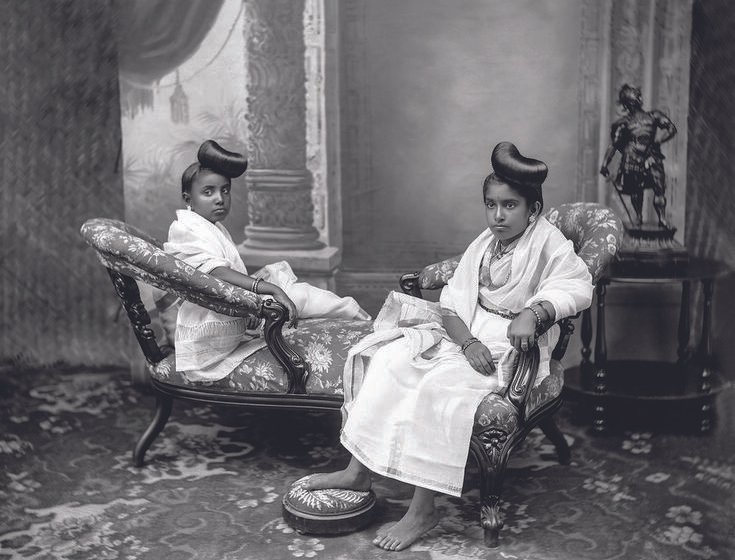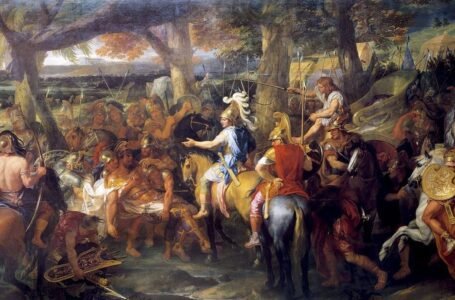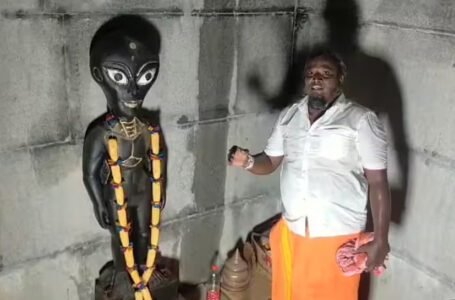The Royal Legacies of Travancore: Maharani Sethu Lakshmi Bayi and Maharani Sethu Parvathi Bayi

The two queens of the Travancore royal family who were born as cousins and grew up to play a prominent part in the history of Travancore. Granddaughters of the famous painter Raja Ravi Varma, who were adopted by the Travancore royal family went on to live lives that were surely influential but in no way easy and uncomplicated.

The royal family of Travancore followed the matrilineal system, it was called Muramakkathayam. Under matrilineal systems it is the women that hold greater power and authority than the men of the family. The successor of the throne in such systems was therefore the eldest son of the kings sister instead of his own. It was a woman’s duty to provide the family with an apparent heir. Since Travancore family were at several times left without the chance of a potential heir, adoptions had become frequent.
Pooradam Thirunal Sethu Lakshmi Bayi and Moolam Thirunal Sethu Parvathi Bayi were cousins born one year apart with the former being born in 1895 and latter being born in 1896. In 1900, at a very young age they were adopted by Senior maharani Lakshmi bai despite serious opposition. At the time of their adoption the cousins were given the titles of senior and junior ranis of Attingal according to the one-year age gap. When maharani Sethu Lakshmi Bayi assumed the title of Senior Rani, maharani Sethu Parvathi Bayi had no choice but to take onto the role of junior maharani with left a bitter feeling in her.

In 1906, at the age of ten years, Sethu Lakshmi Bayi was married to Sri Rama Varma, who belonged to the royal house of Haripad. Sethu Parvathi Bayi was presented with a few potential matches and she picked Sri Pooram Nal Ravi Varma Thampuran of the Kilimanoor Palace as her consort. They got married in 1907. In 1912, she gave birth to Sree Chithira Thirunal who became the heir. At the young age of fifteen she became the amma maharani of Travancore.
The situation was intense because in case the then ruling maharaja passed on early, the kingdom would not have a ruler till 1930 because the adopted queens were two young to bear children and when they eventually did have children that were males, the kingdom would need to wait till the potential heir was 18 years of age. In luck, the king rule until 1924 but the Chitra Thirunal who was next in line to inherit the throne would not be of age till 1931. Since the kingdom needed someone to take care of the affair until then, the senior rani Maharani Sethu Lakshmi Bayi was chosen as the regent for the king until he was old enough.

Sethu Parvathi Bayi for obvious reasons was not okay with this causing a strain between the cousins. Having given birth to the next king and consequently having become the amma maharani she expected to hold more power. When the senior rani was chosen as the regent, there are said to be rumours of the junior rani employing black magic as a way to change things. To Sethu Parvathi Bayi’s bad luck though the British government had found out about her schemes and she was separated from her son for a year under the name of “administrative training.” This also somewhat caused a stain on her reputation.

SETHU LAKSHMI BAYI’S TIME AS A REGENT
THE BEGINNING
One of the major events happening during the time she started her regency was the Vaikom Satyagraha. The princely state of Travancore had a feudal, militaristic, and ruthless system of custom-ridden government. This also made untouchability a major prevailing issue in the kingdom. People belonging to certain castes were considered polluting and were not allowed to walk on certain roads and go to temples. Vaikom Satyagraha led by K. Kelappan had a group of satyagrahis who attempted to walk on these prohibited roads. They were arrested by the police. The next day, more satyagrahis attempted to walk on the roads, and they were also arrested. Vaikom Satyagraha marked the beginning of temple entry movements in India.

UNLIKE OTHER QUEENS
Mahatma Gandhi met up with rani Sethu Lakshmi Bayi during this time and was surprised by how different she was from women of royalty that indulged fully in luxury and had materialistic ambitions. He found her modest and noticed that she did not wear exquisite jewellery and clothes like other did but was instead simple and relied on her natural beauty and grace. Something that did cause criticism was that she did not do anything to initiate the change in prohibition of Dalit entry in temples telling Gandhiji that she was only a “regent.”
THE DIFFERENCES
While there were criticisms there were also praises. In two consecutive years she made two major changes. 1925 saw a ban on animal sacrifices in Travancore and in 1926 she successfully abolished the devadasi system. The Medical Department was modernised under her regency to provide better and more convenient services. She appointed the first ever female doctor in Travancore as the head of the Medical Department. In 1928 a Central Road Board was established and several new highways and roads were constructed across Travancore. It is said that Travancore’s revenues rose by very big margins.

RANI SETHU PARVATHI BAYI’S LIFE AS A TAPESTRY OF GOOD AND BAD
DIFFICULTIES
While having lost the chance of being the senior rani due to one year of age gap, and not receiving any great power even after becoming the Amma maharani did give birth to animosity in her heart. Her marriage itself cannot be said to be an extraordinary one. Due to differences and her husband’s said lack of personality they eventually separated. But it would not be fair to conclude this to be her life and not mention the colourful spectrum of her personality and interests.
THE GOODS
She was an amazing musician. She could speak in French and Sanskrit, and when told that her usual sports were out of the question during pregnancy, picked up golf. Once she invited foreigners to a religious procession, but caught them off guard by serving whiskey. She could cook well and used to stitch for her children. She was also a fan of jungle safaris. It can be said that she was surrounded with controversies as a consequence of envy for her cousin and hunger for power.

THEIR LEGACY
Two young girls adopted by a royal family grew up to play different roles as rani. While one mothered the kingdom as a regent, the other went to lengths to ensure it is her son that is the true recipient of power. Contrasting characters and situations created issues between them but both of them endured and came out of them stronger. It is not often that we see matrilineal system get followed but they proved that putting women in power is an apt decision and in no ways are maharani any lesser than the maharajas.


